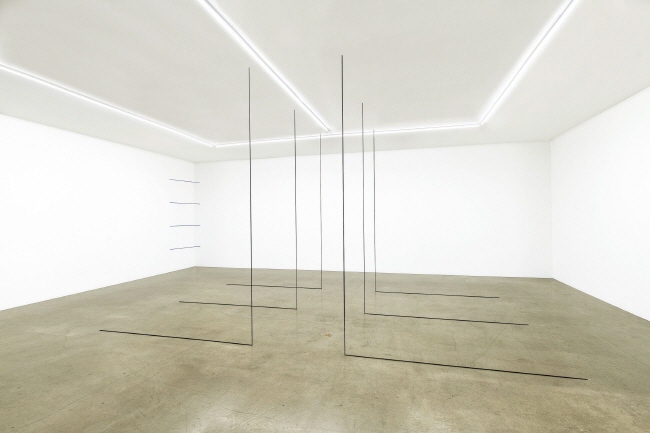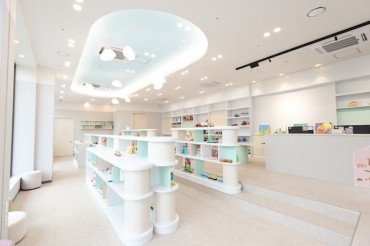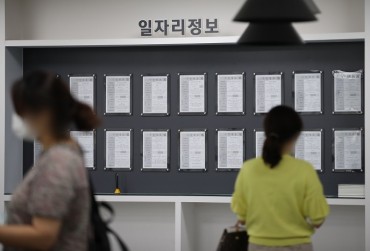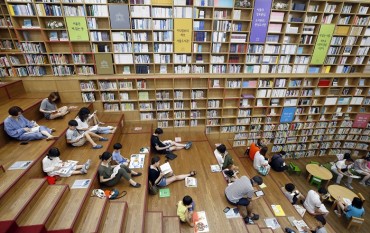
Fred Sandback’s 1976 creation, “Untitled (Sculptural Study, Six-part Right-angled Construction),” on display at Gallery Hyundai’s exhibition “Obangsaek.” (image: Fred Sandback Estate)
SEOUL, Aug. 28 (Korea Bizwire) — Iconic American sculptor Fred Sandback (1943-2003) creates a towering column or imposing walls using a few streaks of acrylic yarn that could be found anywhere.
The philosophy-majored artist adroitly exploited the power of imagination to build massive structures out of almost nothing, knowing that he could provoke a viewer to see the rest of the form only if its edges were defined.
This week, dozens out of his massive inventory of imagination-provoking yarn and drawing works hit Gallery Hyundai in central Seoul under the title “Obangsaek.”
The exhibition, the first major presentation of Sandback’s work in South Korea, carefully selected out of his artistic archive 29 yarn, engraving and drawing works, matching the five-color traditional Korean palette, “Obangsaek,” representing red, blue, yellow, white and black.
The yarn structures lining the gallery building’s basement and first and second floors demonstrate the versatility of his yarn works, whose prototypes are strictly maintained by the Fred Sandback Estate, and how such works can be lengthened or shortened to fit different exhibition spaces.
In fact, his yarn sculptures are so versatile that two of the works in the collection were installed over the windows of a traditional Korean “hanok” building in the backyard of the gallery, which serves as an in-house restaurant.
“Breaking out of the conventional sculpture form, Fred Sandback sought new types of sculpture, turning the (yarn) material that has little volume into an sculpture that doesn’t have mass, providing a new type of experience of space,” Sohn Yoo-kyung, the gallery’s exhibition manager, said.
Materiality matters little in Sandback’s yarn sculptures so that the threads are thrown away after an exhibition, leaving only the idea and design of the sculptures as arts materials.
“It takes the special installation staff from the Fred Sandback Estate and their secret equipment to fix (the yarns to the floors and ceilings) to put together an exhibition,” according to the gallery manager.
The collection of “Obangsaek,” in particular, features several yarn pieces that are being revealed to the public for the first time, including the 1974 work, “Untitled (Sculptural Study Leaning Construction),” as well as the 1993 creation, “Untitled (Sculptural Study, Seven-part Construction).”
Also on display is his 2001 work, “Untitled (Sculptural Study Wall Construction),” that was part of the exhibition collection for the 52nd Venice Biennale in 2007.
The theme of the latest Sandback exhibition in Seoul was proposed by Amy Baker Sandback, the wife of the late artist and the operator of the Fred Sandback Archive, who traveled to Seoul to supervise the installation, according to the gallery.
“The artistic philosophy of Sandback who highlighted interaction between art works and space as well as art works and spectators, left a big influence on contemporary sculptors and installation artists,” according to Gallery Hyundai.
Having kicked off on Tuesday, the exhibition runs till Oct. 6 and the admission is free.
(Yonhap)

Fred Sandback’s yarn sculpture installed over a window of a traditional Korean structure in the backyard of Gallery Hyundai. (image: Gallery Hyundai)






